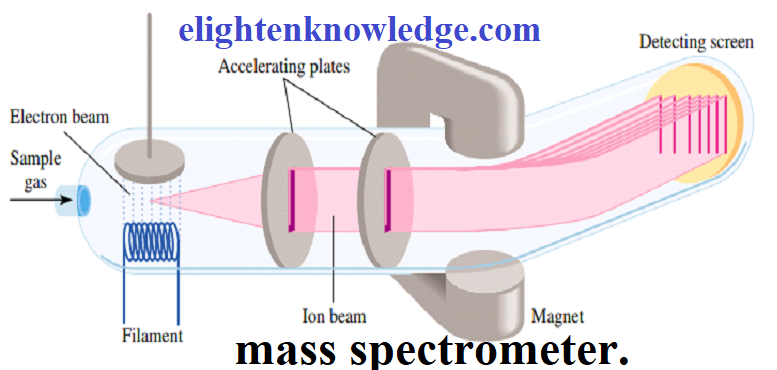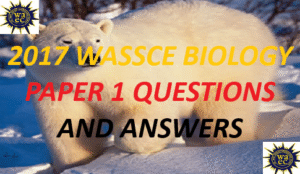Enlighten Exam, Chemistry Questions for 2023 WAECE Candidates. (Set 3)

QUESTIONS
1. Select the correct chronological order for the discoveries of the following scientists. [Dobereiner, Newlands, Chancourtois, Mendeleev]
A. Chancourtois, Dobereiner, Newlands, Mendeleev
B. Dobereiner, Chancourtois, Newlands, Mendeleev
C. Dobereiner, Newlands, Chancourtois, Mendeleev
D. Chancourtois, Newlands, Dobereiner, Mendeleev
2. The molecular formula of chloride of Eka-Aluminium and Eka-Silicon respectively are
A. GaCl3 and SiO4
B. GaCl3 and AlCl3
C. AlCl3 and SiCl4
D. GaCl3 and GeCl4
3. Which of the scientists given below discovered that the periodic table should be based on the atomic number?
A. Mendeleev
B. Moseley
C. Newlands
D. Lothar Meyer
4. How many elements are there in the 6th period of the periodic table?
A. 18
B. 30
C. 8
D. 32
5. Modern periodic table is based on the atomic number of the elements. The experiment which proved the significance of the atomic number was
A. Mulliken’s oil drop experiment
B. Mosley’s work on X-ray spectra
C. Bragg’s work on X-ray diffraction
D. Discovery of X-rays by Rontgen
6. Alkali metals are powerful reducing agents because
A. these are metals
B. their ionic radii are large
C. these are monovalent
D. their ionisation potential is low
7. Which of the following metals requires the radiation of highest frequency to cause the emission of electrons?
A. Na
B. Mg
C. K
D. Ca
8. Halogens and chalcogens family have highly …P.. electron gain enthalpy. Here, P refers to
A. negative
B. positive
C. zero
D. infinity
9. Which of the following represents the correct order of increasing electron gain enthalpy with negative sign for the elements O, S, F and Cl?
A. Cl < F < O < S
B. O < S < F < Cl
C. F < S < O < Cl
D. S < O < Cl < F
10. The electron affinity for the inert gases is –
A. zero
B. high
C. negative
D. positive
11. The element with positive electron gain enthalpy is
A. hydrogen
B. sodium
C. oxygen
D. neon
12. Which of the following is correct?
A. Isoelectronic ions have same nuclear charge
B. Isoelectronic ions have same neutrons
C. Isoelectronic ions have same number of electrons
D. All are correct
13. Why the size of an anion is larger than the parent atom?
A. Due to increased repulsion among the electrons.
B. Due to decrease in effective nuclear charge.
C. Due to increase in effective nuclear charge.
D. Both (a) and (b).
14. The elements which are characterized by the outer electronic configuration ns1 to ns2 np6 are collectively called
A. Transition elements
B. Representative elements
C. Lanthanides
D. Inner transition elements
15. f-block elements are called inner transition elements because
A. they have properties similar to those of transition elements
B. they exist in between transition elements
C. the last electron enters into the f-orbital of the penultimate shell
D. the last electron enters into any orbital of penultimate shell
16. The long form of periodic table consists of
A. seven periods and eight groups
B. seven periods and eighteen groups
C. eight periods and eighteen groups
D. eighteen periods and eight groups
17. All the members in a group in long form of periodic table have the same
A. valence
B. number of valence electrons
C. chemical properties
D. All of the above
18. In the long form of the periodic table all the non-metals are placed in
A. s-block
B. p-block
C. f-block
D. d-block
19. Arrange the following elements in the order of their increasing non-metallic character [Li, O, C, Be, F].
A. F < O < C < Be < Li
B. Li < Be < C < O< F
C. F < O < C < Be < Li
D. F < O < Be < C < Li
20. Which is the correct order of ionic sizes (At. No.: Ce = 58, Sn = 50, Yb = 70 and Lu = 71)?
A. Ce > Sn > Yb > Lu
B. Sn > Ce > Yb > Lu
C. Lu > Yb > Sn > Ce
D. Sn > Yb > Ce > Lu
21. The order of increasing sizes of atomic radii among the elements O, S, Se and As is:
A. As < S < O < Se
B. Se < S < As < O
C. O < S < As < Se
D. O < S < Se < As
22. Who provide explanation of valence based on intentness of noble gases?
A. Lewis
B. Kossel-Lewis
C. Langmuir
D. Sidgwick & Powell
23. What are the exceptions of the octet rule?
A. The incomplete octet of central atom
B. An odd number of electrons on central atom.
C. Expanded octet of the central atom
D. All of these
24. Which of the following combination will form an electrovalent bond?
A. P and Cl
B. NH3 and BF3
C. H and Ca
D. H and S
25. Among the following which compound will show the highest lattice energy?
A. KF
B. NaF
C. CsF
D. RbF
26. Which of the following bond will have highest ionic character?
A. H–I
B. H–F
C. H–Cl
D. H–Br
27. Which one of the following pairs of molecules will have permanent dipole moments for both members?
A. NO2 and CO2
B. NO2 and O3
C. SiF4 and CO2
D. SiF4 and NO2
28. The molecule which has zero dipole moment is
A. CH3Cl
B. NF3
C. BF3
D. ClO2
29. Which of the following has dipole moment?
A. CO2
B. p-dichlorobenzene
C. NH3
D. CH4
30. A neutral molecule XF3 has a zero-dipole moment. The element X is most likely
A. chlorine
B. boron
C. nitrogen
D. carbon
31. Which one of the following molecules is expected to have zero dipole moment?
A. H2O
B. CO2
C. SO2
D. CaF2
32. Atomic orbital is monocentric while a molecular orbital is polycentric. What is the meaning of above statements?
A. Electron density in atomic orbital is given by the electron distribution around a nucleus in an atom. While in molecular orbital it is given by the electron distribution around group of nuclei in a molecule.
B. While an electron in an atomic orbital is influenced by one nucleus, in a molecular orbital it is influenced by two or more nuclei depending upon the number of atoms in the molecule.
C. The electron in an atomic orbital is present in one nucleus while in molecular orbital electrons are present on more than one nuclei depending upon the number of atoms in the molecule.
D. All of these.
33. Bond order is a concept in the molecular orbital theory. It depends on the number of electrons in the bonding and antibonding orbitals. Which of the following statements is true about it? The bond order
A. can have a negative quantity
B. has always an integral value
C. can assume any positive or integral or fractional value including zero
D. is a non-zero quantity
34. When two atomic orbitals combine, they form
A. one molecular orbital
B. two molecular orbital
C. three molecular orbital
D. four molecular orbital
35. Paramagnetism is exhibited by molecules
A. not attracted into a magnetic field
B. containing only paired electrons
C. carrying a positive charge
D. containing unpaired electrons
36. The difference in energy between the molecular orbital formed and the combining atomic orbitals is called
A. bond energy
B. activation energy
C. stabilization energy
D. destabilization energy
37. Which molecule has the highest bond order?
A. N2
B. Li2
C. He2
D. O2
38. Which one of the following molecules is expected to exhibit diamagnetic behaviour?
A. C2
B. N2
C. O2
D. S2
39. The reason for exceptionally high boiling point of water is
A. its high specific heat
B. its high dielectric constant
C. low ionization of water molecule
D. hydrogen bonding in the molecules of water
40. Acetic acid exists as dimer in benzene due to
A. condensation reaction
B. hydrogen bonding
C. presence of carboxyl group
D. presence of hydrogen atom at -carbon
41. Hydrogen bonding is formed in compounds containing hydrogen and
A. highly electronegative atoms
B. highly electropositive atoms
C. metal atoms with d-orbitals occupied
D. metalloids
:NOTE
- Aqueous solutions are electrically conducting if the solutes are electrolytes. If the solutes are nonelectrolytes, the solutions do not conduct electricity.
- Three major categories of chemical reactions that take place in an aqueous solution are pre-precipitation reactions, acid-base reactions, and oxidation-reduction reactions.
- From general rules about the solubilities of ionic compounds, we can predict whether a pre-precipitate will form in a reaction.
- Arrhenius acids ionize in water to give H ions, and Arrhenius bases ionize in water to give OH ions. Brønsted acids donate protons, and Brønsted bases accept protons.
- The reaction of an acid and a base is called neutralization.
- Adding a solvent to a solution, a process known as dilution decreases the concentration (molarity) of the solution without changing the total number of moles of solute present in the solution.
- Gravimetric analysis is a technique for determining the identity of a compound and/or the concentration of a solution by measuring mass. Gravimetric experiments often involve precipitation reactions.
- In acid-base titration, a solution of known concentration (say, a base) is added gradually to a solution of unknown concentration (say, an acid) with the goal of determining the un- known concentration. The point at which the reaction in the titration is complete is called the equivalence point.
- Redox titrations are similar to acid-base titrations. The point at which the oxidation-reduction reaction is complete is called the equivalence point.
- In redox reactions, oxidation, and reduction always occur simultaneously. Oxidation is characterized by the loss of electrons and reduction by the gain of electrons.
- Oxidation numbers help us keep track of charge distribution and are assigned to all atoms in a compound or ion according to specific rules. Oxidation can be defined as an increase in oxidation number; reduction can be defined as a decrease in oxidation number.
- Many redox reactions can be subclassified as a combination, decomposition, displacement, or disproportionation reaction.
- The concentration of a solution is the amount of solute present in a given amount of solution. Molarity expresses concentration as the number of moles of solute in 1 liter of solution.
:ANSWERS
1. B. Correct order is Dobereiner, Chancourtois, Newlands Mendeleev.
2. D. Chloride formulas
- Eka-Aluminium = GaCl3(ECl3)
- Eka-Silicon = GeCl4(ECl4)
- Mendeleev arranged elements in horizontal rows and vertical columns of a table in order to their increasing atomic weights.
3. Moseley discovered that atomic number is more fundamental property than atomic mass.
4. D. 6th period consists of 32 elements.
5. B. Mosley’s work on X-ray spectra
6. D. ns1 configuration and lesser IE.
7. B. As I.E. of Mg is more
8. The halogen (group-17) and the chalcogens (group-16) are two groups of elements having highly negative electron gain enthalpies.
9. O < S < F < Cl [Electron gain enthalpy –141, –200, – 333, – 349 kJ /mol]
10. A. zero
11. D. Noble gases have positive values of electron gain enthalpy because the anion is higher in energy than the isolated atom and electron.
12. Isoelectronic ions have same number of electrons.
13. The size of an anion will be larger than that of the parent atom because the addition of one or more electron(s) would result in increased repulsion among the electrons and a decrease in effective nuclear charge.
14. B. Representative elements
15. B. they exist in between transition elements
16. B. seven periods and eighteen groups
17. D. Because of the presence of same number of valence electrons the elements of same group have similar chemical properties.
18. B. Non-metals are mainly placed in p-block elements.
19. B. Non-metallic character increases on moving from left to right in a period.
20. B. Correct order of ionic size is Sn > Ce > Yb > Lu.
21. C. On moving down in a group atomic radii increases due to successive addition of extra shell hence O < S < Se
Further As is in group 15 having one less electron in its p orbital hence have higher atomic radii than group 16 elements. i.e., O < S < Se < As.
22. B. Kossel and Lewis provide some logical explanation of valence which was based on the intentness of noble gases.
23. D. According to octet role, the central atom must have 8 electrons but in some compounds the number of electrons is more than 8, or less than 8 or an odd number of electrons is left on the central atom e.g., PCl5, BF5, NO.
24. C. Higher the difference in electronegativity between the two atoms, more will be electrovalent character of the bond. Among given choices, calcium and hydrogen have maximum difference in their electronegativities.
25. B. For compounds containing cations of same charge, lattice energy increases as the size of the cation decrease. Thus, NaF has highest lattice energy. The size of cations is in the order Na+ < K+ < Rb+ < Cs+
26. B. Ionic character of a bond is directly proportional to the difference of electro negativities of bonded atoms. So, H – F in which electronegativity difference is highest, will have highest ionic character.
27. B. Both NO2 and O3 have angular shape and hence will have net dipole moment.
28. C. The dipole moment of symmetrical molecules is zero.
29. C. Dipole moment is a vector quantity; hence the dipole moment of symmetrical molecules is zero. As CO2, p-dichlorobenzene and CH4 have regular symmetrical shape. Hence = 0
However, NH3 has distorted structure due to presence of lone pair of electrons on N atom and thus has definite dipole moment.
30. B. BF3 has planar and symmetrical structure thus as a result the resultant of two bond moments, being equal and opposite to the third, cancels out and hence molecule possess zero dipole moment.
31. B. CO2
32. B. Atomic orbital is monocentric because an electron in it is influenced by one nucleus. While molecular orbital is polycentric as it is influenced by two or more nuclei depending upon the number of atoms in the molecule.
33. C. SO2
34. B. One bonding M.O. and one anti-bonding M.O.
35. D. Molecules having unpaired electrons show Paramagnetism.
36. C. stabilization energy
37. A. N2
38. A and B.
39. D. Hydrogen bonding increases the boiling point of compound.
40. B. hydrogen bonding
41. A. Hydrogen bond is formed when hydrogen is attached with the atom which is highly electronegative and having small radius.








